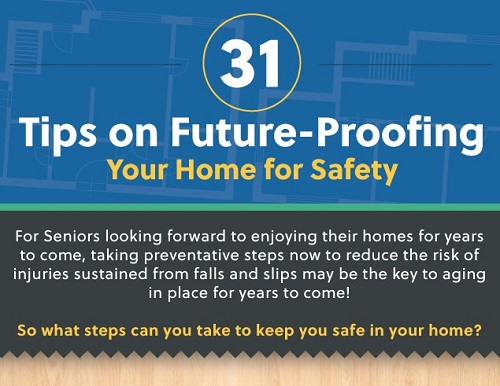The Challenge of Aging in Place with Dementia
Guest article by Easy Climber Stair Lifts and Home Elevators
Eighty-seven percent of U.S. seniors choose to age in place or remain in their own homes rather than relocating to a facility or community specializing in elder care. It is only natural that seniors would prefer to continue enjoying the independence that comes with living in the places where they’ve raised families and accumulated years, or even decades, worth of memories.
Aging in place can be particularly challenging for the estimated five million seniors in the U.S. who are living with dementia. Memory loss creates additional risk as do other symptoms, such as difficulty communicating, mood swings, and trouble with spatial orientation.
To better understand the true risk dementia presents, it may help to address some common misconceptions.
Common dementia myths
- Dementia is not a disease.
It is a variety of symptoms brought on by declining cognitive abilities – symptoms that can worsen with age. - Dementia and Alzheimer’s disease are not the same.
Although Alzheimer’s accounts for an estimated 60 percent of dementia diagnoses, the Institute for Dementia Research and Prevention says many other health conditions can trigger age-related dementia. - Some types of dementia are progressive.
Symptoms can worsen with age. Other types can be kept in check with medication helping to promote an independent lifestyle. - Dementia is not an inevitable part of the aging process.
According to the World Health Organization, only about 7 percent of world’s 65-and-over population are affected by dementia.
Just because you or a loved one occasionally misplaces a set of keys, it does not necessarily signal the onset of dementia. 
If you are one of the many who are committed to aging in place and even experiencing early signs of dementia, follow these tips to make your home more senior friendly.
Tips for Aging in Place
- Eliminate clutter throughout your house, keeping pathways clear and reducing the risk of tripping.
- Keep frequently used items (such as cell phones and remote controls) in easy-to-remember and highly-visible locations.
- Install “smart” devices that shut down potentially dangerous appliances like stove tops if left unattended.
- Install grab bars near showers and tubs and handrails near steps and stairwells.
- Install motorized stair lifts or in-home elevators to make floor-to-floor travel safer.
These are just a few common-sense steps that help mitigate risk in your home. Make it a safer space for seniors and those living with dementia. Click on 31 Tips for Future Proofing Your Home to see a comprehensive infographic offering tips for each room of your home.
There will be more than 88 million adults over the age of 65 living in the U.S. by 2050. Those looking forward to aging in place, should know a recent National Institute on Aging study, reports incidents of dementia are declining. [7/25/2017: Link at NIA.NIH.gov site broken. Read related information in abtract here: http://jamanetwork.com/journals/jamainternalmedicine/article-abstract/2587084] This is great news for those wishing to remain independent as long as possible. In the meantime, it’s never too early to begin future-proofing your home for safety.
 Easy Climber Stair Lifts and Home Elevators is part of one of the country’s largest home remodeling companies, an organization dedicated to providing products and services that enable seniors to successfully age in place.
Easy Climber Stair Lifts and Home Elevators is part of one of the country’s largest home remodeling companies, an organization dedicated to providing products and services that enable seniors to successfully age in place.









Very good article. I am glad that I followed most of these items during the 10 years of dealing with the decline of my wife with Parkinson’s. Of which, the Lew Body Dementia slipped in there for the last 8 years. These are good ideas. To me it was very important to keep My Marie at home with me so I could care for her.
Don, thank you for sharing and keeping your beloved Marie home until the end.
You are proof that we can survive caregiving.
Aging in place is challenging on its own and it becomes more difficult if the one who’ll stay home is a person diagnosed with Dementia. These tips are really hopeful and centered on how you can safeguard the entire well-being of your loved with Dementia by proofing you home.
I think proofing your home will be more effective if you’ll consider the behavioral changes of your loved ones. This can help you identify the triggers first and then help you come up with the right course of action.
Such a fantastic article, very insightful! It’s so important to keep a safe environment within your home.